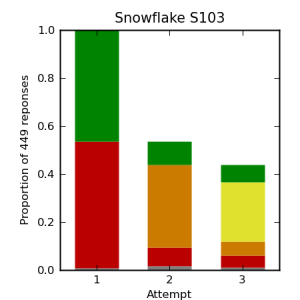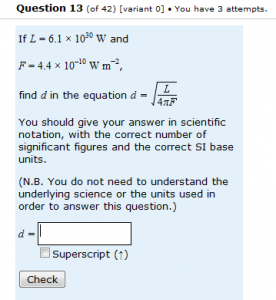I know I keep banging on about the importance of monitoring your questions when they are ‘out there’, being used by students. If what follows appears to be a bit of a trick (and in a sense it is), it’s a trick with firm foundations – the monitoring of many thousands of student responses. Continue reading
-
Archives
- December 2019
- July 2018
- October 2017
- August 2017
- July 2017
- November 2016
- September 2016
- May 2016
- February 2016
- January 2016
- November 2015
- October 2015
- July 2015
- June 2015
- March 2015
- January 2015
- December 2014
- November 2014
- October 2014
- September 2014
- August 2014
- May 2014
- March 2014
- February 2014
- January 2014
- December 2013
- November 2013
- October 2013
- August 2013
- July 2013
- June 2013
- May 2013
- April 2013
- March 2013
- February 2013
- January 2013
- December 2012
- November 2012
- October 2012
- September 2012
- August 2012
- July 2012
- May 2012
- April 2012
- March 2012
- February 2012
- January 2012
- December 2011
- November 2011
- October 2011
- September 2011
- August 2011
- July 2011
- June 2011
- May 2011
- April 2011
- March 2011
- February 2011
- January 2011
- December 2010
- November 2010
- October 2010
- September 2010
- August 2010
- July 2010
-
Meta



